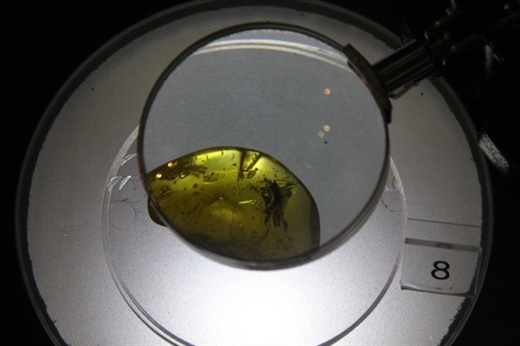Travel book author Rick Steves admonishes, "If you don't like something you probably don't know enough about it." Take amber, for example. We have seen amber for sale in every Baltic town we visited. We're not much for jewelry so pretty much ignored the yellow stuff. That is until we visited Gdansk's Amber Museum in the former prison tower.
At first glance amber is nothing more than a gem used for pretty things. Upon further review, as NFL officials say, there is more to the story. Not all amber is translucent golden; some is milky, some white and some even red. The myth has it that as they were drowning in the Great Flood, tears of the children and the innocent turned into clear, light amber, suitable for medicines and beads for young girls. Tears from the pennitent sinners turned cloudy, good material for making pipes and handles for walking sticks. And from the tears of blasphemers and drunkards came the dark amber to be used only for making tar and paint.
A more likely story is that amber was formed about 40 million years ago from the sap of coniferous trees that dominated the Baltic forests. Over the millennia it has undergone many changes, hardening into an easily carved material of great beauty. Loose pieces of amber are hand-netted from the Baltic surf. Much comes from industrial open-pit mines. Many pieces contain insects that were trapped at the sap dripped from the trees. These "inclusions" give archeologists an insight into some pre-historic life and give sci-fi writers a source for dinosaur DNA.

"Inclusion" containing pre-historic insects
Baltic amber was first harvested in the 8th and 9th Centuries. Gdansk artisans produced amber crosses, rings, dice and pawns for the aristocracy from around 1000 AD, reaching its "Golden Age" in the 16th Century, producing amber art for most of the European nobility. Today it's impossible to walk down a street without seeing signs for amber jewelry.
Live and learn!